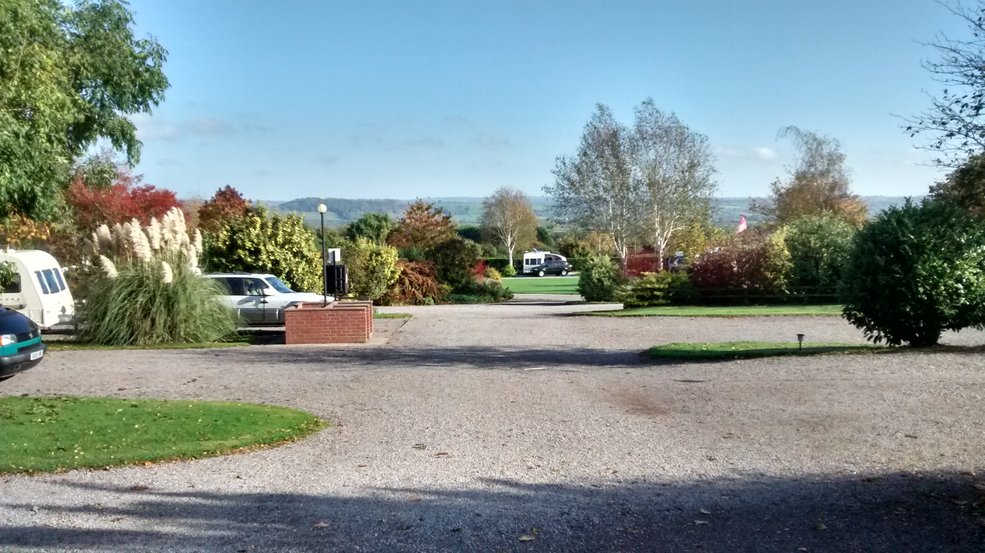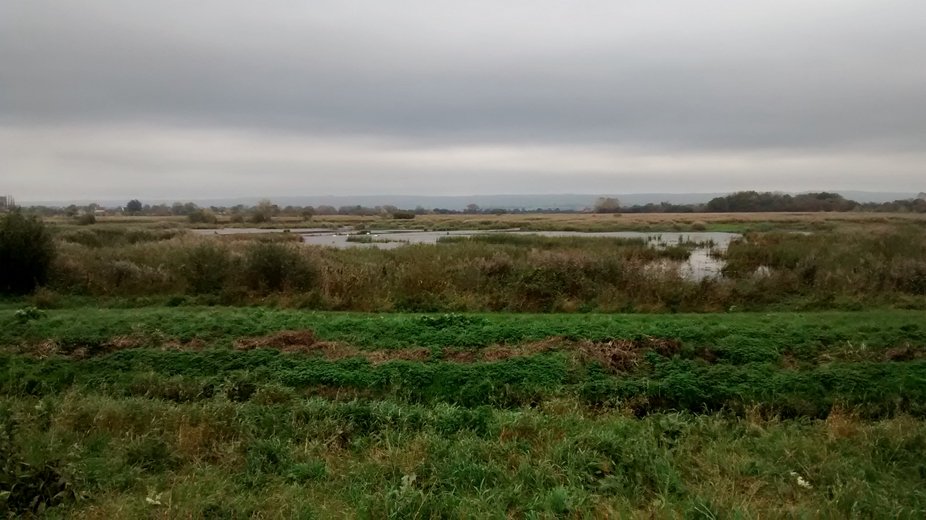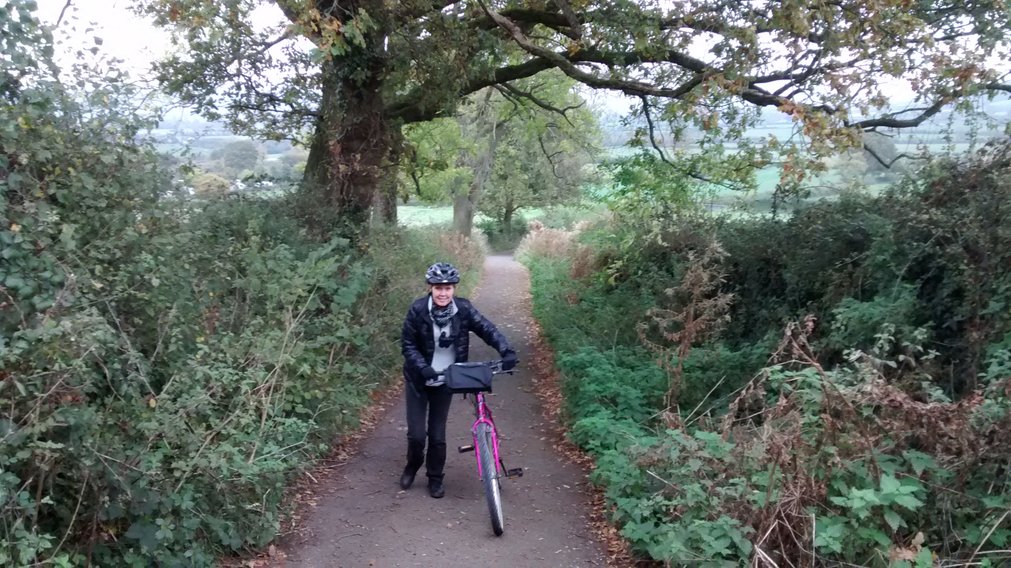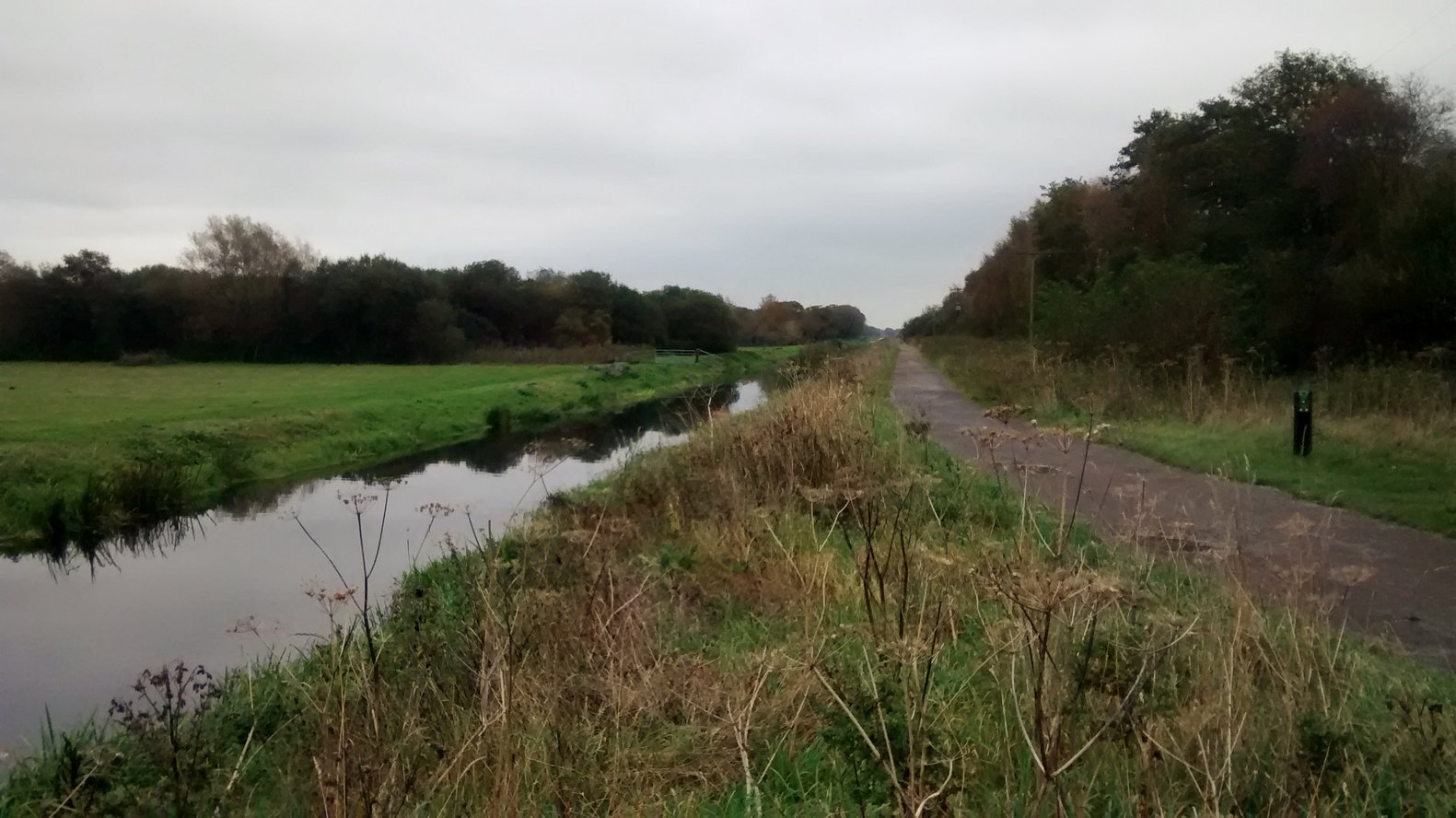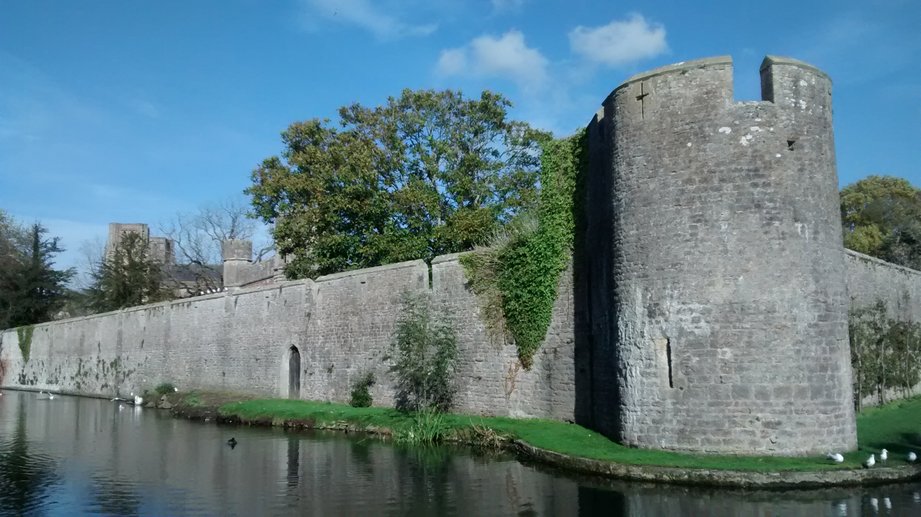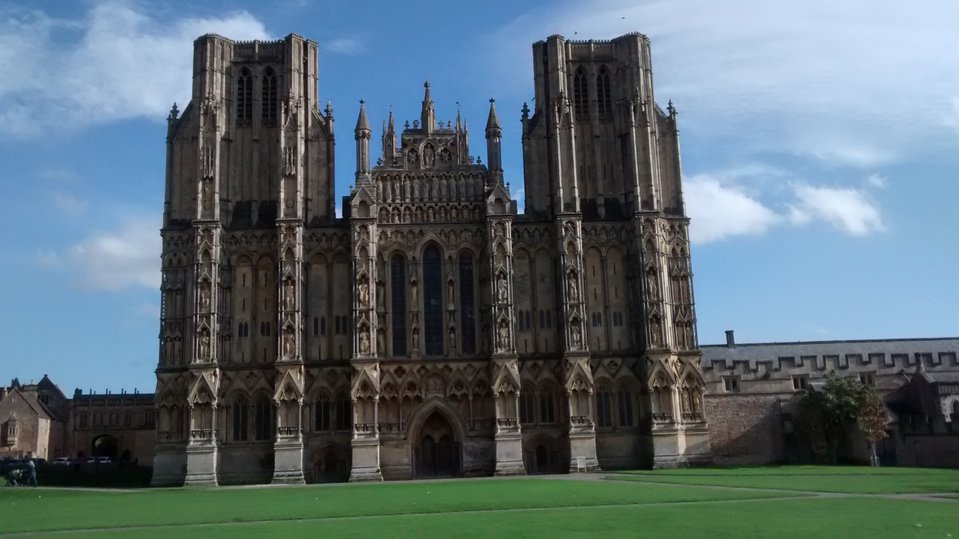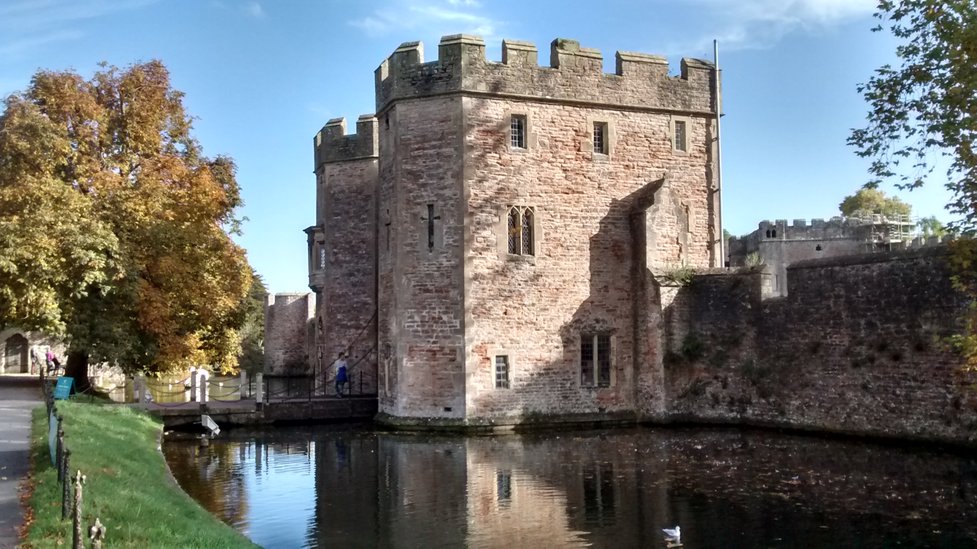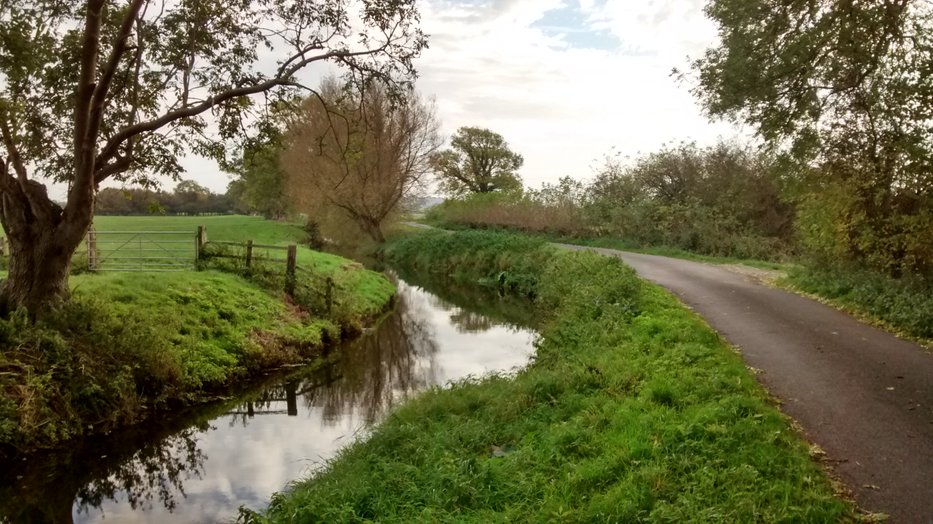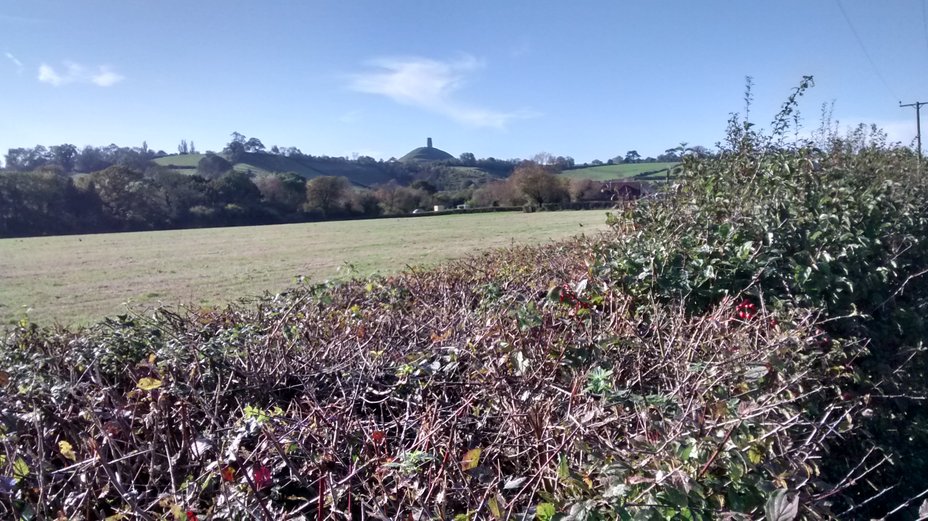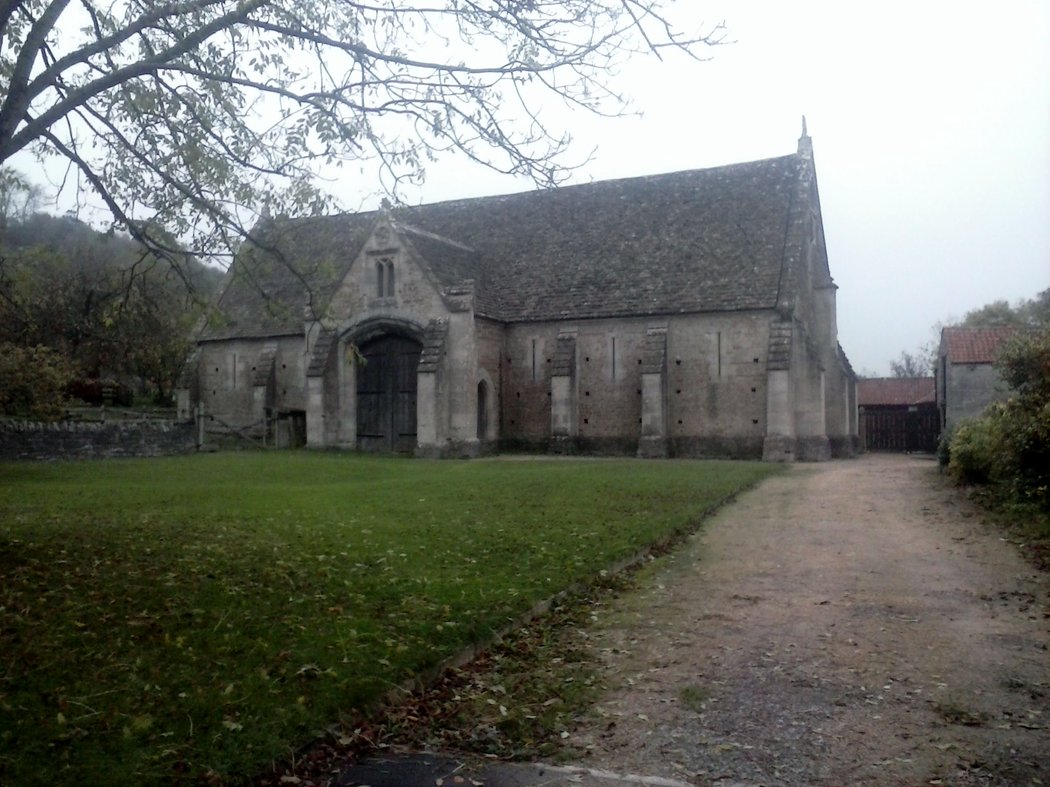Motorhometrips
with tips for cycling & hiking
Glastonbury
We based ourselves at Old Oaks Campsite (adults only), at Wick, just outside of the town, below Glastonbury Tor and one word describes this campsite and that is ’outstanding’. Not only does it have first class sanitary facilities, with a modern block with individual en suite shower rooms but it is in a beautiful setting in the Somerset countryside with superb views over the Mendips. No effort has be spared with regard to the landscaping and planting of this site. It also prides itself on its recycling efforts and has separate bins for everything, putting many other sites to shame. Who says that you can not run a commercial organisation with a conscience. It also tries to support local enterprises, offering local produce for sale and promoting local services. A mini bus service to Glastonbury runs in the peak periods, a welcome service for motor homers or those that fancy a drink and do not want to worry about driving.
Two other areas that it scores in our books is that it has a dedicated motor home service point and secondly it offers free wi fi throughout the site, bringing it into line with top class hotels. The attention to detail is commendable and this is why rightly it can call itself a five star site.
Price wise in late October we had no complaints, at £15 a night it was considerably cheaper than the Camping & Caravanning Club.
http://www.theoldoaks.co.uk/index.htm
Cycle route 3 passes right outside of the site and offered us two relatively easy cycling options, the first to Avalon Marshes and the second to the cathedral town of Wells.
Avalon Marshes approx 20 miles return trip (but we added an extra 5 miles by returning to the marshes)
With a strong interest in birds the Avalon Marshes were a distinct draw and this area. is a spectacular and beautiful lowland wetland area with a wide variety of birdlife. It is a refuge for the rare bittern but you are more likely to see marsh harriers gliding across the top of the marshes, bearded tits and cetti warblers, though the latter is more likely to be heard rather than seen, are also resident.
It was, however, the starling murmurations that proved to be the major draw on this trip.
We did say that it was a relatively easy cycling route but the start is quite challenging as you have to cross Stonedown Hill, You turn right out of the site and then take the track on the right next to the house which is ’Stonedown Lane’. This is then a steady climb until you reach Glastonbury Tor and unless you are super fit it is easier to walk this.
When you reach the top, turn right and then take the first turning on your right. This then descends into the town, again fairly steeply but now you are going down and thereafter the cycle route 3 is well sign posted.. Follow route 3 out of town and then through the industrial area, before you join the old railway track and onward to the marshes.
The line was built by the Somerset Central Railway between Highbridge & Glastonbury. This twelve mile section opened in1854 before being extended to Highbridge Wharf and then to Burnham on Sea.
An additional line to Wells from of Glastonbury was opened on 15th March 1859 and this closed in 1951.
The railway was amalgamated with the Dorset Central Railway to form the Somerset & Dorset Railway. It was often referred to as "the Slow and Dirty", or sometimes "the Slow and Doubtful. It was closed in 1966.
The railway follows the Glastonbury Canal which was designed to link Glastonbury with the sea, via the River Parrett and was opened in 1834 but like many rural canals, it struggled to make a profit and was abandoned in 1854, though the Highbridge end survived to 1936. As with many canals it was bought by the railway to transport materials and to add insult to injury the railway was built on the tow path.
The Canal & the Railway Track Running in Tandem
You follow the old railway line, through the RSPB reserve of Ham Wall and the Natural England reserve of Shapwick Heath until the track ends at the road, where cycle route 3 follows the road to the left.. If you turn right, after less than half a mile you reach the visitors centre, though this probably breaches the trade descriptions act. It is a ramshackle of temporary buildings occupied by the various agencies that run the reserve. The good news is that there are plans to build a new purpose built centre but in the meantime you can get refreshments here.
Route 3 then follows quiet roads through the villages of Shapwick and Aschcott before joining the railway track and the entrance to the reserves. We re-entered the reserve to go to Ham Wall to witness the starling murmuration and though early in the year we were lucky to be treated to a brief but impressive display.
You then retrace your steps back to Glastonbury.
Tip Rather than following route 3 on the way back in Glastonbury, continue through town and pick up Wellhouse Lane which leads up to the Tor. This is shorter and you are going to have to push your bike up for some of the way in any case.
Glastonbury to Wells (29 miles) (14 miles if you follow route 3 there and back)
Again we follow route 3 but this time we turn left out of the campsite with an easy cycle down to the main road which you follow until you take the picturesque route through Queen’s Sedge Moor, before climbing to see fine views towards Wells cathedral, You then descend to the main road, before going under it and taking the old railway line into Wells. If you follow route 3 then you enter into Wells by the Bishops Palace which is beautiful.
Wells is a small attractive town and is dominated by its impressive cathedral and equally so its neighbour ‘The Bishop’s Palace’ and both are worth a visit. There is a charge to the Palace and a voluntary donation to the cathedral.
The Entrance to the Bishop’s Palace
You are spoilt for choice where to eat. A picnic overlooking the cathedral is a good choice or the café in the Bishop’s Palace.
You have a choice for the return route. The quickest is to retrace your steps back.
The alternative, thanks to the young lady in the shop ’Bike City ‘ is to go down the High Street, bear right and past St Cuthbert Church. (You can push your bike past the Church as it is one way or follow the road to the right, past the job centre and come round in a circle).
You continue straight ahead, crossing the main road, passing Tesco’s and over into Burcott Lane. After you pass some houses the road soon leads into open country and the big plus is though you can see the Mendips on your right, this is all level cycling through very pretty lanes.
You pass a Camping & Caravanning Club certified site on your right, in a very attractive setting at the bottom of Hembury Hill. This has hard standings and the owner was a charming lady so this is earmarked for a future visit.
Turn left here and continue to Fenny Castle tearooms on the banks of the River Sheppey which would be a good stopping point but in late October it was only open from Thursday’s.
Follow the river round until you reach a cross roads and here you are faced with two options. Firstly you can turn left towards Upper Godney, crossing the river and follow the road until you eventually will meet up with the A39 and cycle route 3 again and then you can retrace your route back to the campsite. This is the shorter option, roughly in line with that of the original way into Wells regarding distance and time taken and certainly flatter.
Following the River Sheppey
Secondly you can go straight ahead, as we did, past Westhay Moor, continuing until you pick up the B3151 (not very busy) and here turn left into the village of Westhay. At Westhay take the road which leads to the Avalon Marshes Centre(signposted) and then continue past the centre until you pick up the old railway into the reserves and then back to Glastonbury.
The advantage of this route is that it gives another opportunity to visit the wetlands which has to be a big plus but the downside is that you have to tackle the killer hill again at Glastonbury but that is a small price to pay and it is great fun bombing down Stonedown Lane back to the site.
Glastonbury
No visit would be complete without a walk up to the Tor and a visit to the town.
Glastonbury town is the highest and the most obvious of a series of ‘islands’ that intersect the surrounding marshes. Its historical dominating feature is the abbey which demonstrates the influence of the town and the major role it has played in the area.
Glastonbury Tor is visible on many of the walks and cycle routes in the area, so it is difficult to get lost.
It also has one of the surviving Abbey barns and St Margaret’s chapel and almhouses are undeniably quaint. There are a number of other attractive older buildings in the town but other parts do seem a bit tired.
Late 14th Century Abbey Barn
It’s also a bit whacky kitsch abounds everywhere and New Age shops are stuffed with crystals, candles and books on witchcraft and what other town has a ‘Goddess Temple‘.
Full advantage is taken of its Arthurian links, King Arthur and Guinevere were supposedly buried in Glastonbury Abbey or was it Glastonbury Tor, or did they even exist?
You can also witness ‘New Age’ camps in the surrounding area but it takes all types and if people see that this is a way of getting in touch with their spiritual side then who am I to argue.
For us the spirituality is provided by the superb wildlife in the surrounding marshes and the great variety of countryside in a relatively small area and the peace provided by this, away from the towns.
